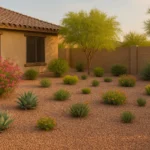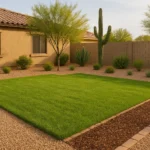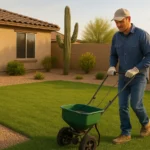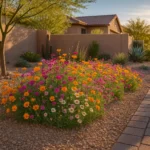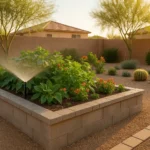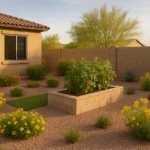As residents of Gilbert, Arizona, we’re uniquely positioned to take advantage of the stunning variety of native plants that thrive in our local climate. Incorporating these hardy specimens into our yards not only enhances the beauty of our landscapes but also fosters sustainability. In this article, we’re going to dive deep into design ideas for integrating native plants into your Gilbert yard. Whether you’re starting from scratch or looking to update your existing landscape, these tips will help you create a vibrant, water-wise, and environmentally friendly outdoor space.
Understanding the Benefits of Native Plants
Before we explore design ideas, let’s first understand why native plants are a great choice for your Gilbert yard. Native plants are those that have evolved to thrive in a specific geographical region, in our case, the Sonoran Desert and the Southeast Valley. They’re adept at surviving in our local climate, requiring less water and maintenance compared to non-native species.
Native plants are a boon for local wildlife too. They provide natural habitats and food sources for birds, insects, and other creatures. By choosing to incorporate native plants into your yard, you’re contributing to the biodiversity of Gilbert and the larger Southeast Valley.
Furthermore, native plants contribute to water conservation – a crucial concern in our arid region. Because they’ve adapted to our local climate, they can survive with considerably less watering than non-native plants. This not only saves water but also makes maintaining your yard less labor-intensive.
Selecting Native Plants for Your Yard
When selecting native plants for your yard, consider their water needs, growth habits, and the aesthetic you’re aiming for. For example, desert-adapted plants like the Saguaro cactus or Blue Palo Verde tree are iconic choices that thrive in full sun and need minimal water. On the other hand, if you’re looking for desert wildflowers to add color to your landscape, consider the vibrant Desert Marigold or the delicate Desert Lupine.
Don’t forget about the smaller details too. Ground covers like the Trailing Juniper can fill in bare spots and add texture. And for borders or accents, the colorful Red Yucca or the unique Fishhook Barrel Cactus can make excellent choices.
Remember, the key to a successful native plant landscape is diversity. By combining plants with different sizes, shapes, and colors, you can create a visually appealing landscape that also supports a variety of wildlife.
Design Ideas for Your Native Plant Landscape
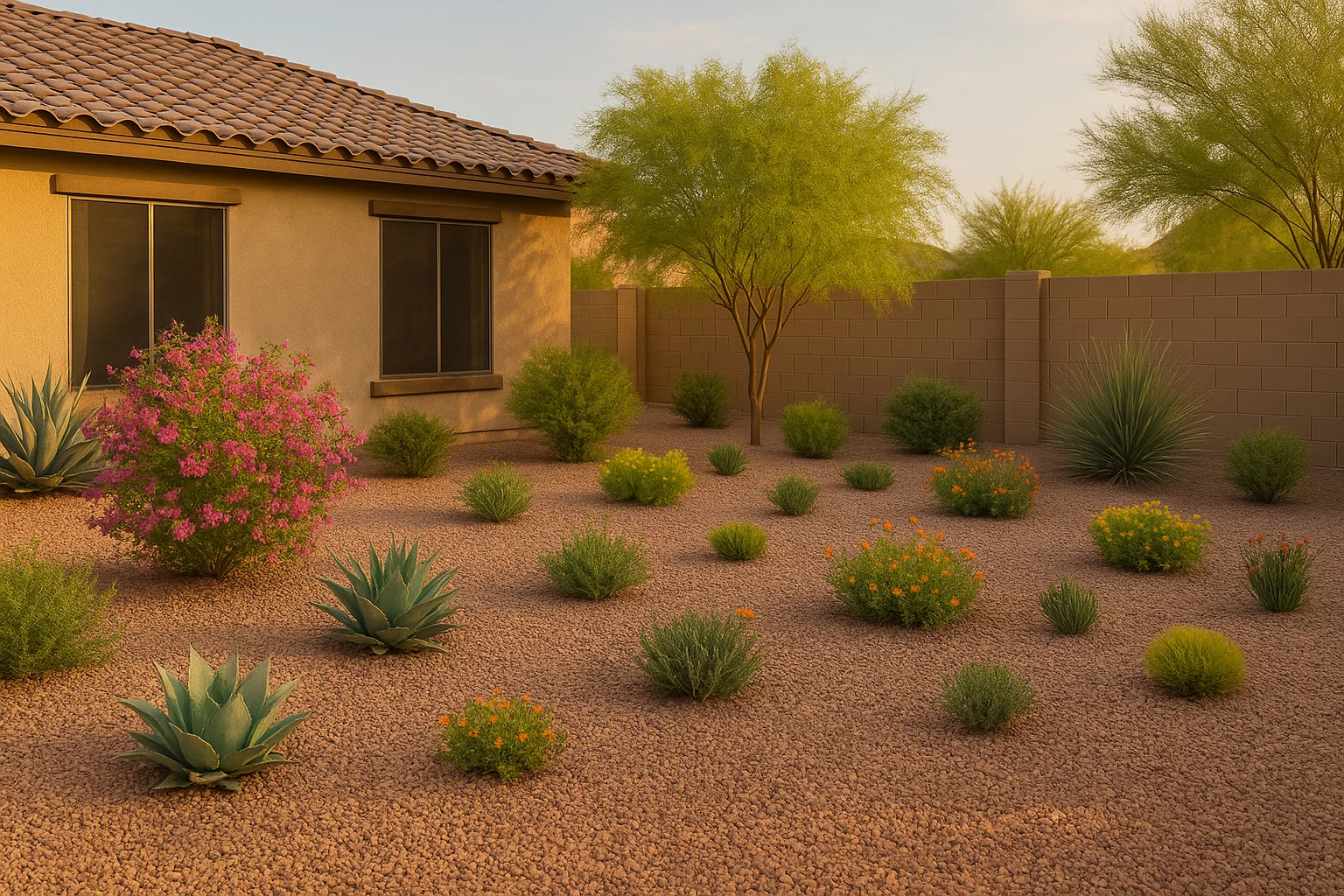
Now that we’ve covered the basics, let’s dive into some design ideas for your Gilbert yard. Remember, these are just starting points – feel free to get creative and tailor these ideas to suit your personal style and the specific conditions of your yard.
Desert Oasis: Create a desert oasis by grouping together plants with similar water needs. This not only conserves water but also creates a visually cohesive look. Start with a centerpiece like the majestic Saguaro, and surround it with smaller plants like the Prickly Pear cactus and desert wildflowers. Use gravel or crushed granite to fill in the gaps and mimic the appearance of a natural desert landscape.
Wildlife Haven: If attracting wildlife is your goal, choose plants that provide habitats or food sources for local creatures. The Desert Willow, for example, attracts hummingbirds with its vibrant flowers, while the Ironwood tree provides shelter for various bird species. Supplement these with flowering plants like the Chuparosa or the Penstemon, which are known to attract bees and butterflies.
Sculptural Garden: For a modern, minimalist look, consider a sculptural garden. This design focuses on plants with intriguing forms, like the Agave or the Totem Pole Cactus. Pair these with a sleek gravel or concrete surface for a clean, contemporary finish.
Local Resources and Inspiration
Looking for more inspiration? The Gilbert Riparian Preserve is a great local resource. This 110-acre park showcases a variety of ecosystems and native plants. Visit to get ideas for your own yard, or simply to appreciate the beauty of our local flora.
Another great resource is the Desert Botanical Garden in nearby Phoenix. Here you can explore thousands of plant species, including many native to the Southwest. Plus, they offer classes and workshops on desert landscaping and horticulture.
Don’t forget about the wealth of online resources available. Websites like the Arizona Native Plant Society offer a wealth of information, including plant lists, gardening tips, and more. Books like “Native Plants for Southwestern Landscapes” by Judy Mielke can also provide valuable guidance.
Maintaining Your Native Plant Landscape
Maintaining a native plant landscape is relatively straightforward, but there are still a few things to keep in mind. Most native plants are adapted to our local rainfall patterns, so be careful not to overwater. Monitor your plants and adjust your watering schedule as needed, especially during our hot summers.
Pruning is another important aspect of maintenance. Prune to maintain the natural form of the plant and to remove dead or diseased wood. Remember, over-pruning can stress plants and lead to unwanted growth, so it’s best to prune sparingly and at the right time of the year.
Finally, be patient. Native plants, especially those grown from seed, may take a few years to establish and start flowering. But once they do, you’ll have a resilient, low-maintenance landscape that not only beautifies your yard but also contributes to local biodiversity.
Conclusion
Creating a native plant landscape in your Gilbert yard is a rewarding project that offers numerous benefits. Not only can native plants turn your yard into a vibrant, low-maintenance oasis, but they also contribute to local biodiversity and water conservation. Whether you’re a seasoned gardener or a landscaping newbie, I hope this guide has provided you with valuable insights and inspiration. Happy gardening!

